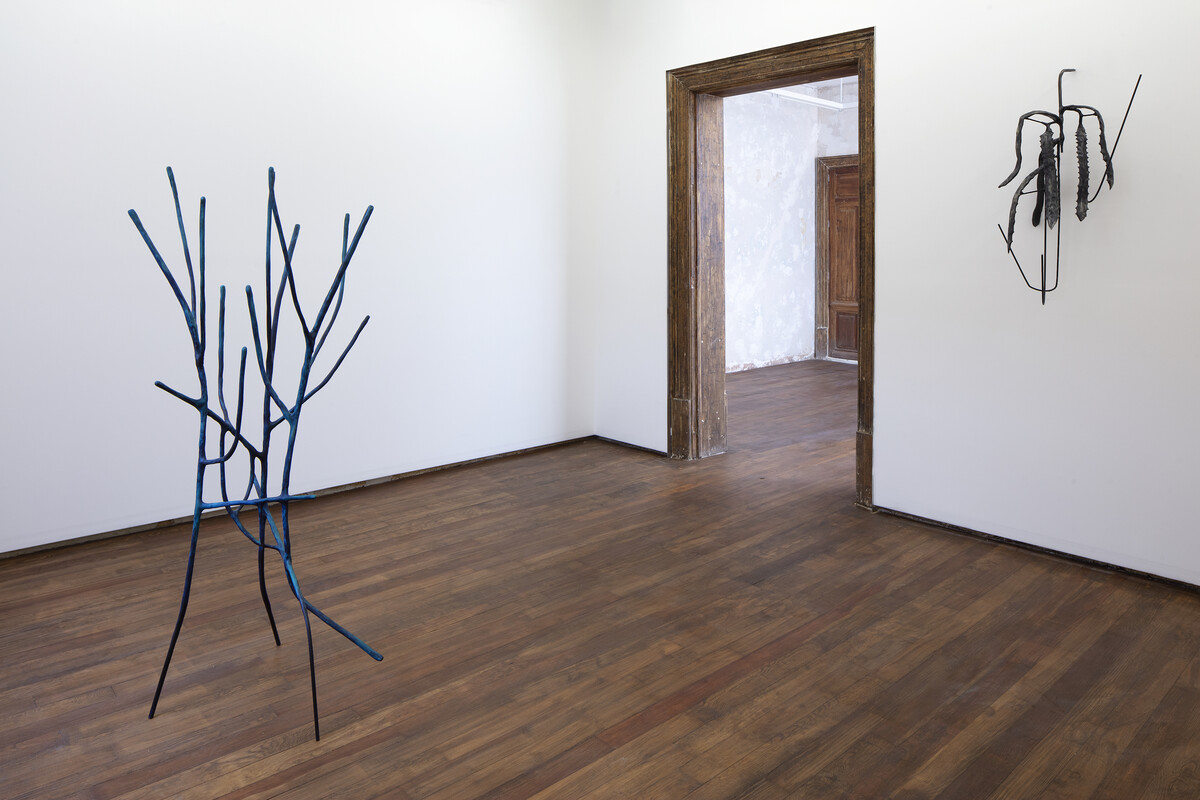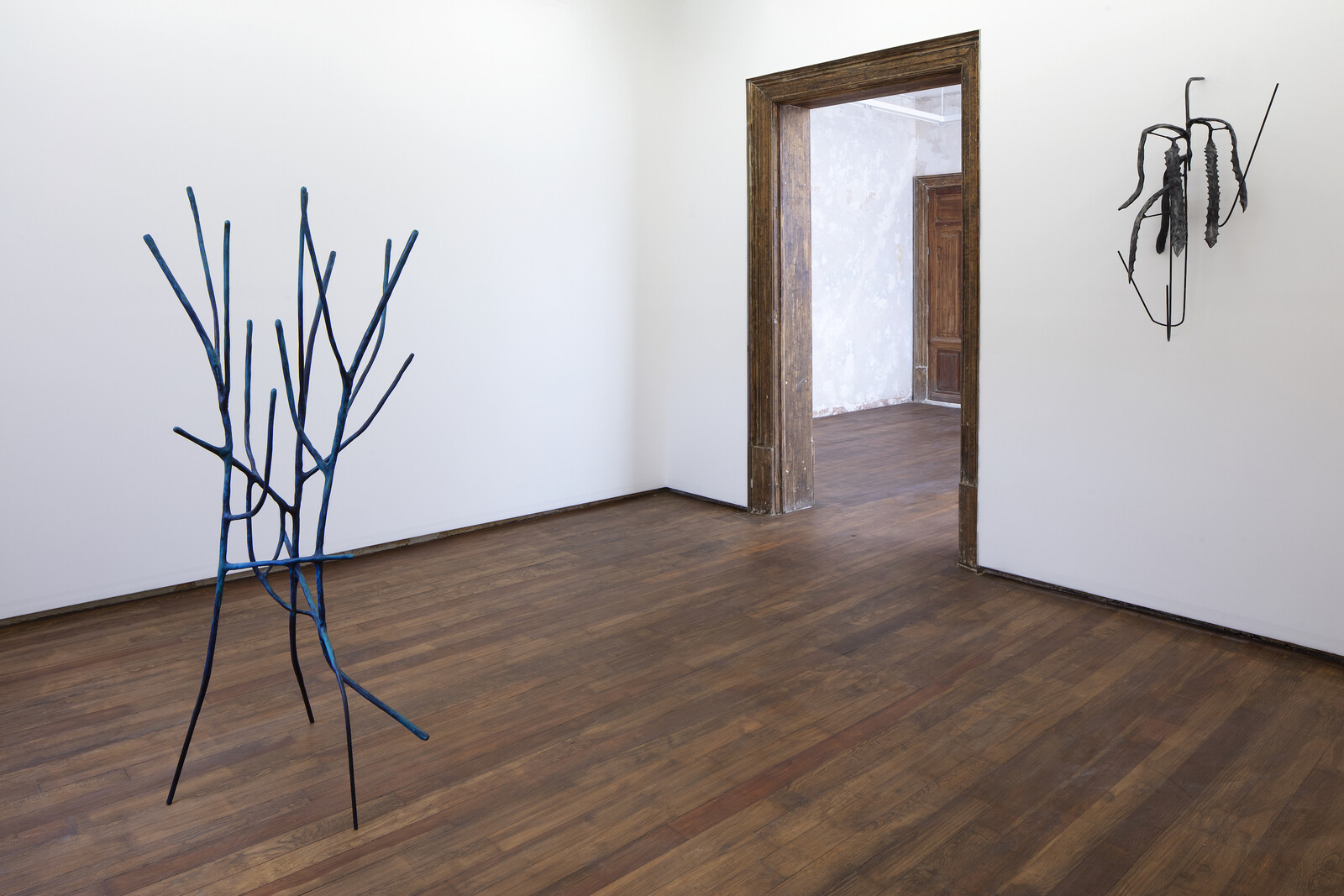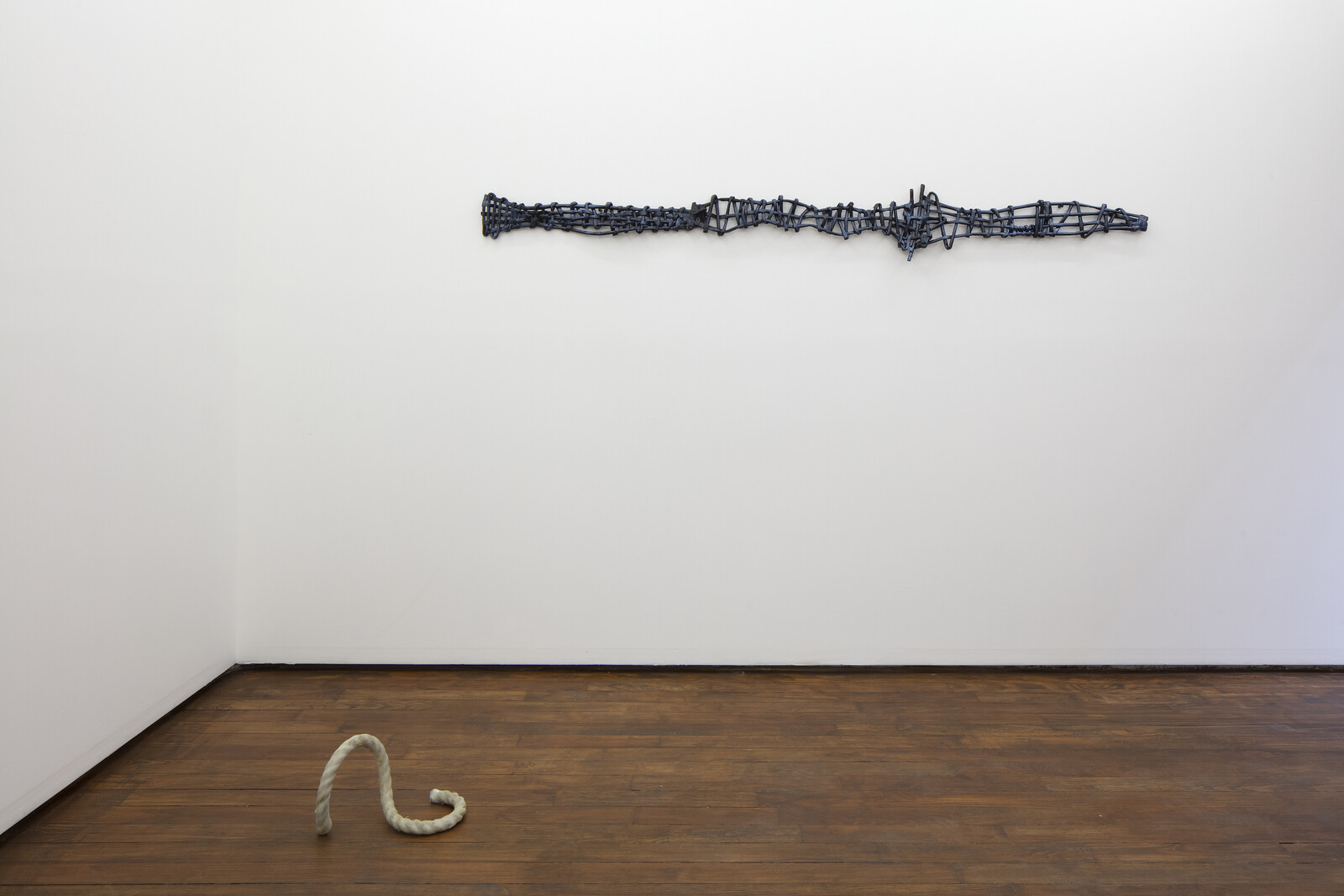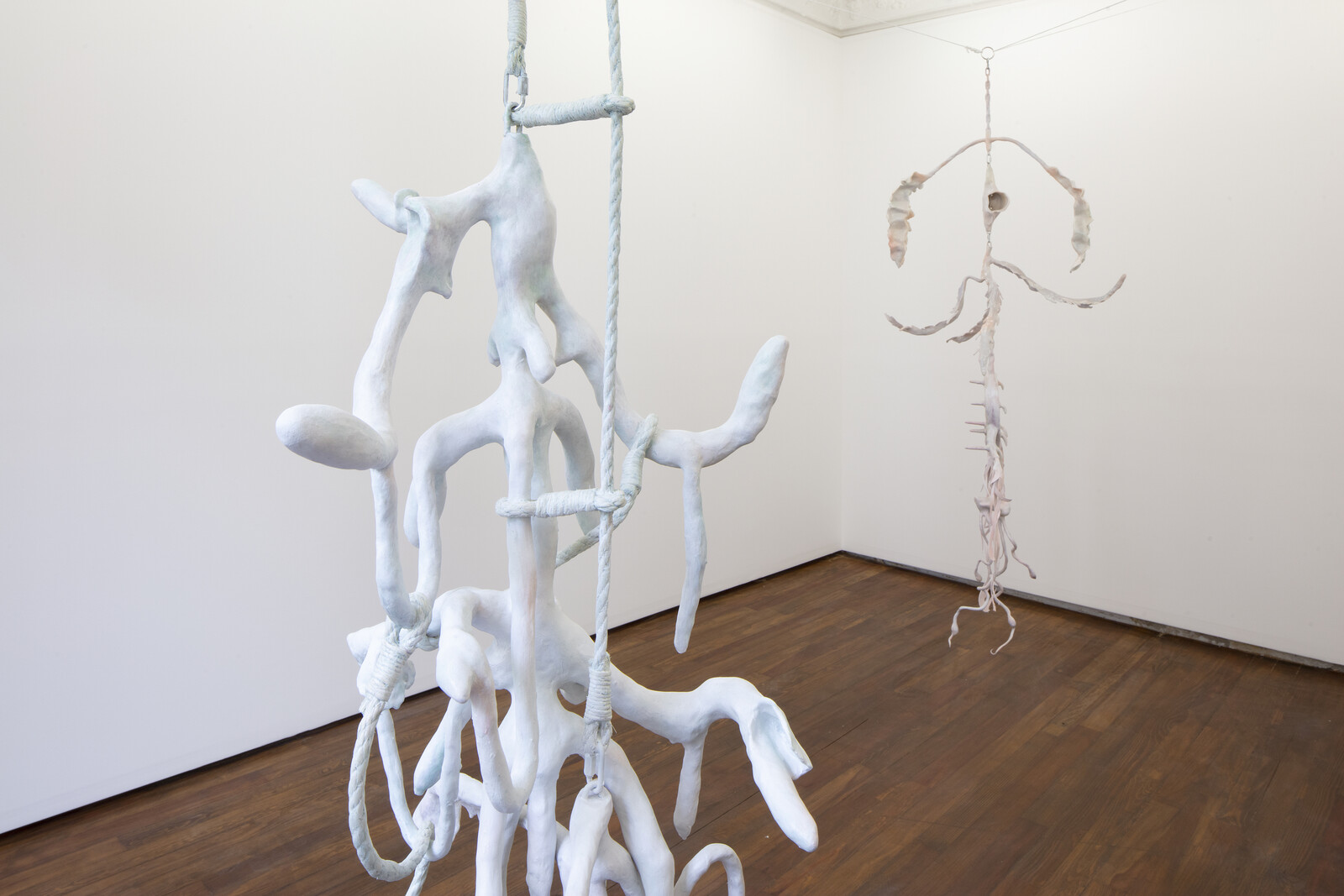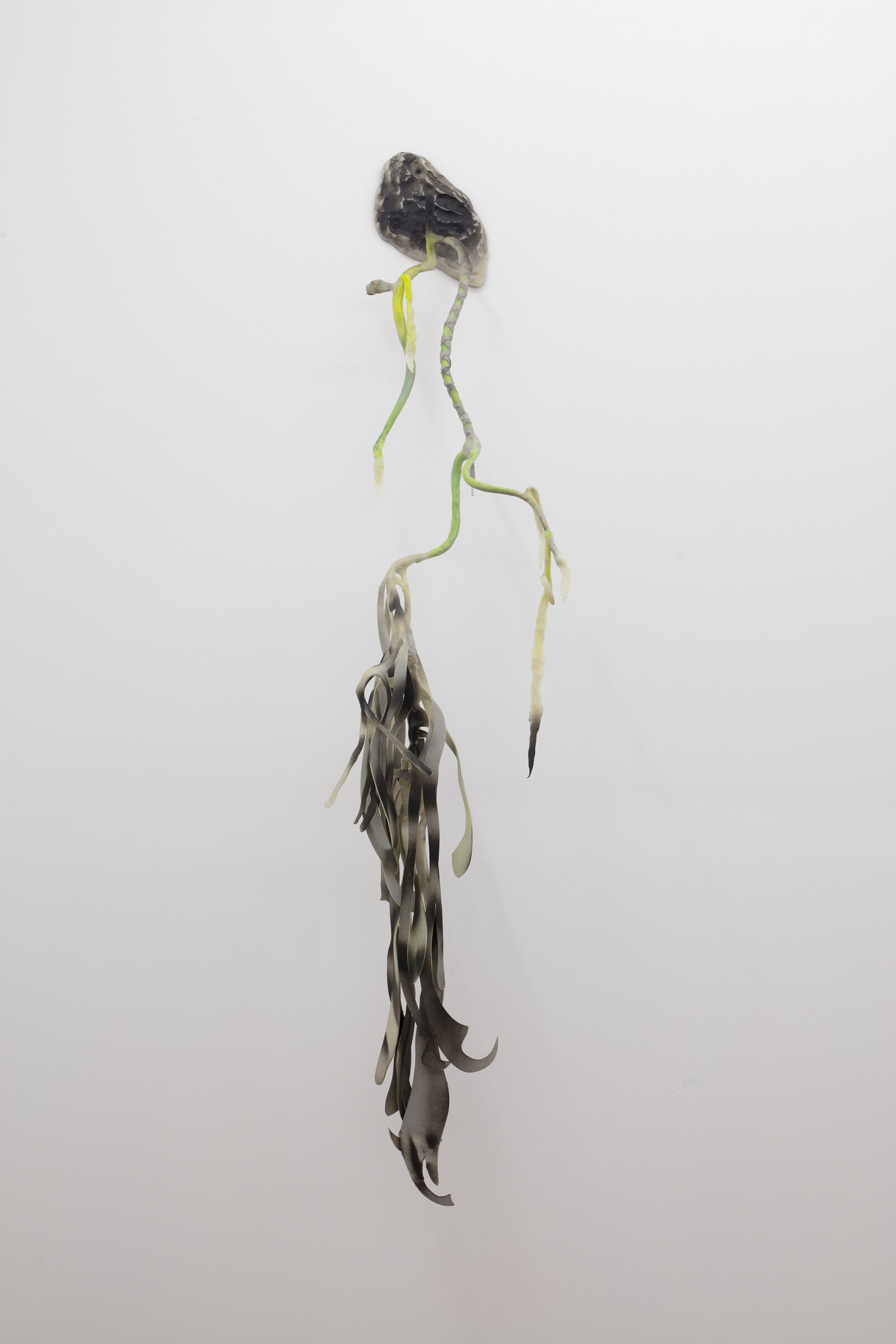Bayo Alvaro’s recent sculptures—evocative of strange, alien flora—recall Karen Barad’s descriptions of a “queer performativity” of nature.1 In this conception of the natural world, nothing is ever exclusively male or female, animate and inanimate; nor is it simply good or evil. Rather, there is endless potential for change and intra-action. The pieces in Alvaro’s third solo show in Mexico City and his first with Deli—a recently opened branch of the New York gallery—appear laced together in symbiosis, reflecting the ways in which living beings continuously tend towards and transform one another.
The young Mexican artist has previously worked across photography, collage, and installation. Here, the focus is on sculpture. The fifteen pieces lushly spread across Deli’s spacious, four-room gallery showcase Alvaro’s approach to sculpting forms that defy easy categorization, ambiguously poised between plants and animals, living creatures and inanimate objects. Alvaro’s objects are particularly lucid examples of a common trend in contemporary sculpture: his seductive treatment of materials sets him apart from more discursive, didactic attempts.
Each room feels thoroughly articulated. Pieces are placed in proximity, as if engaged in intricate dialogue, while smaller works are arranged as if to form an intimate ecosystem. Such is the case in the two rooms on the first floor, where Cerberus’ Slavering Mouth (Aconitum) (all works 2023 unless otherwise stated), presides over the space accompanied by Black Nest (Sacrifice). The first is an arrangement of three planks resembling arms or tongues that appear to invade each other’s spaces, as though desiring a caress that never quite materializes, despite the planks sharing the same metal base. They are made of cold porcelain stretched over a fiberglass skeleton—painted in dark red and black oil, pigments, and lacquer—yet their detailed, shapes, and the imprints of hands on their surfaces, hint towards an open-ended organicism. They are vertebrae tracing through skin; the roof of a mouth; the petals of a strange, gigantic rainforest flower—or, as the title suggests, Cerberus’s heads.
If Cerberus appears tentatively to explore its own organs and surrounding space, Black Nest, positioned across the room, is tangled up in itself. This deep mulberry-colored, cranium-like object is suspended from the ceiling by knotted bungee cords and fine twists of henequen cord. It is bodily and sexual, yet rigid and controlled: a tension reminiscent of BDSM. Their dynamic is completed by a smaller, similarly suggestive piece. SD is a worm-shaped segment of thick rope, thinly dipped in off-white cold porcelain so that its natural fibers are still visible. It ends in a rounded tip that perks up as it hangs from the wall.
The works that open the exhibition are harder and fleshier; as one moves through the rooms, the works are more subtle and ethereal. On the second floor, two pieces—We lay proudly by the Iris field and Bone, Hyacinth and Ivy—hang ghostly from the ceiling in a shared pulley system. Their appearance is multivalent: they could be disembodied spirits, exotic botanical specimens, alien bones, metaphysical medusae. They comprise separate metal pieces covered in cold porcelain, combined with ceramics and joined together by chains, hardware, and rope. They are both white, their tentacles/leaves speckled with hints of light teal and pink. Their delicacy suggests they have consciously evolved together to better coexist in this particular space and form. Another highlight is Canopy (Sket) (2022), perhaps the most plant-like work in the show, but still surprising in its keen use of color and materials. It dangles from a rock-like base attached to the wall, two boney roots ending in flaccid yellowish nothings counterbalance the third branch, hairy with blackened, fern-like leaves.
The show’s press release opens with a quote from Joan Didion’s 1961 essay “On Self Respect.” In it, Didion unfolds the difficult task of attaining self-respect through discipline, stoicism, and a constant, dignified acceptance of the consequences of one’s actions. In light of this idea that self-respect emerges through conflict between the different parts of oneself, Alvaro’s pieces point to how, in seeking to define and remake themselves, people do so in relation to others. Following Barad, people are not excluded from “nature” and its often vicious, sometimes merciful, and unending processes of renewal. Alvaro’s pieces are like flower offerings, embodied metaphors of what one is willing to sacrifice, to change.
Karen Barad, “Nature’s Queer Performativity,” Qui Parle, vol. 19, No. 2 (Spring/Summer 2011), 121–158.
